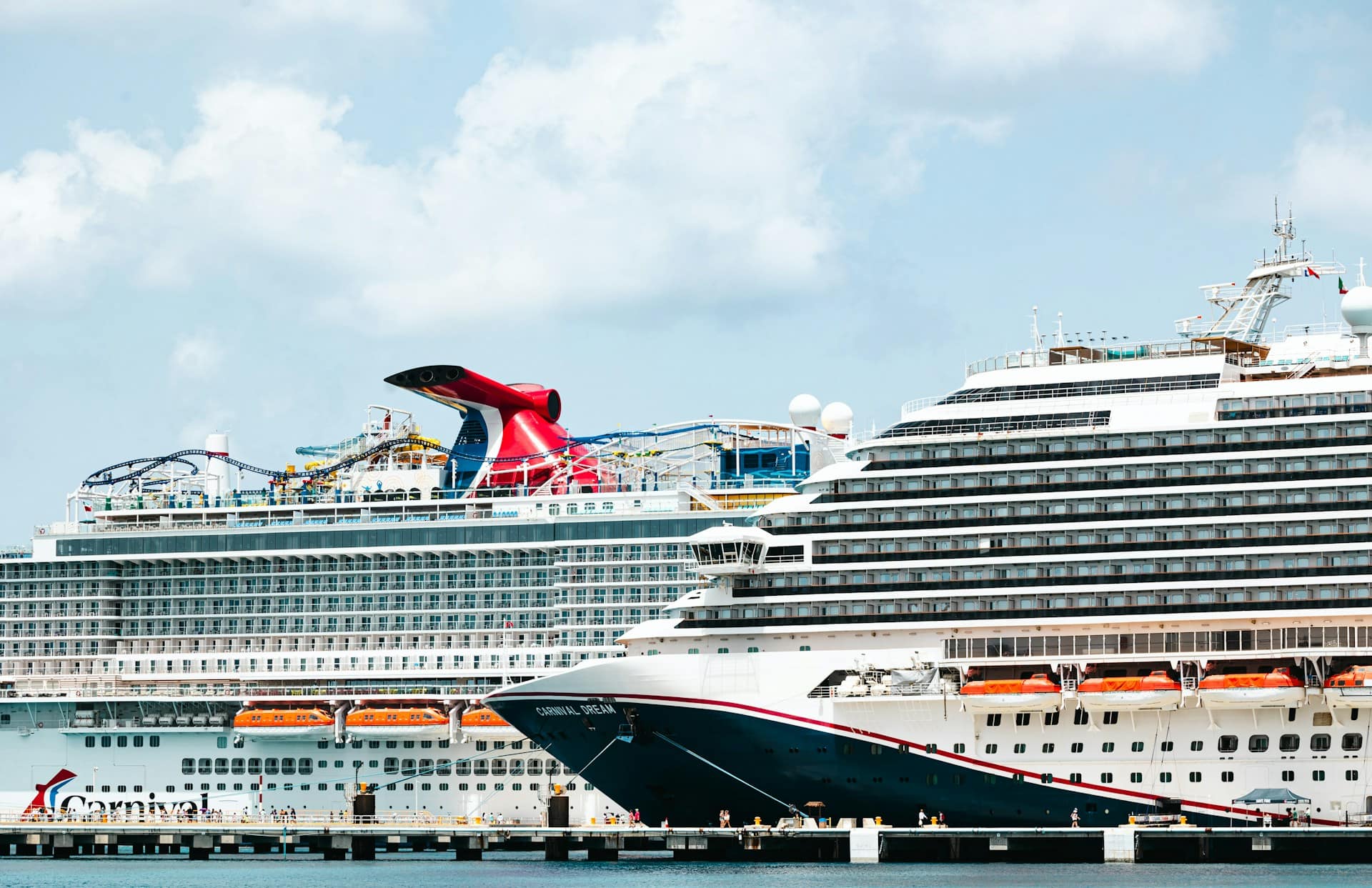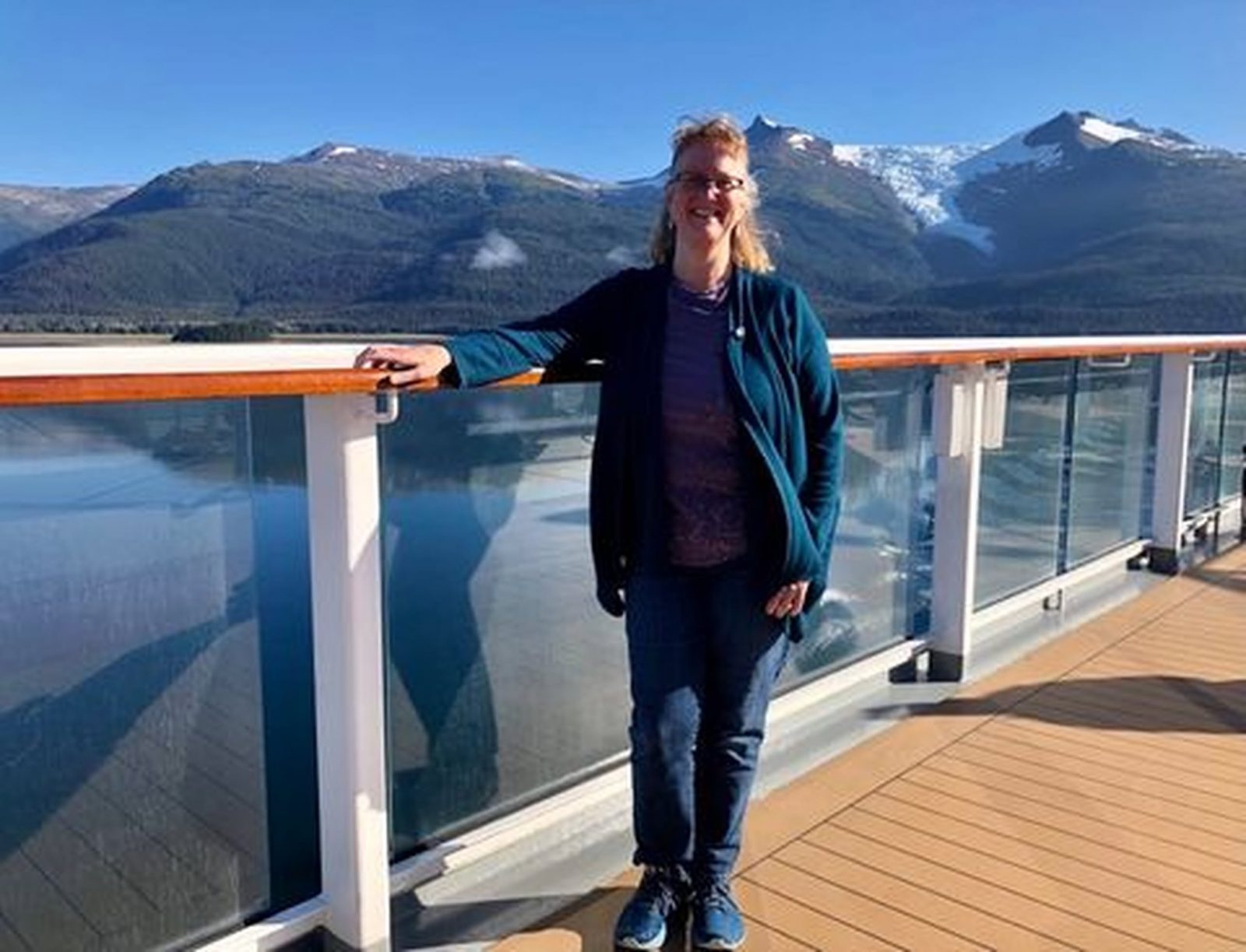Retiring On A Cruise Ship In Singapore For $4.4k Per Month: Does It Make Sense?

Get The Property Insights Serious Buyers Read First: Join 50,000+ readers who rely on our weekly breakdowns of Singapore’s property market.
TJ's interest in property was sparked after returning from the UK- where balconies are not counted in one's square footage!- and finding that the Singapore property had totally changed in the 7 years she was away. When not reading and watching articles & videos about property, she is busy cooking and baking for friends, family & her blog Greedygirlgourmet
To many, living on a cruise ship after retiring, and touring the world sounds like a dream. It’s somewhat similar to being on a permanent holiday! The fact that it comes with a thriving social scene, which many people lack once they leave the workforce, is another reason the lifestyle is so attractive. When the Straits Times ran an article on Villa Vie Residences, a US-based cruise line that launched a 4-year voyage, there was so much interest that the corresponding Instagram post received 17.1k likes and 8,879 shares in a mere 10 days.

For travel to 425 ports in 140 countries located across 7 continents, the package will cost between US$159,999/S$215,300 (double occupancy, rate per person) to US$255,999/S$344,097 (single occupancy.) This works out to a minimum S$4,486 per month per person (double occupancy.)

Keep in mind that the cost of taking even the same cruise can vary quite a bit, depending on many things. For example, does your cabin have a window or is it an “inside’ cabin (no window)? If it has a window, does it include a balcony and is the view obstructed?) Does it include Wi-Fi? Laundry? Alcohol? Etc
As a few of the comments on Instagram (such as the one above) have noted: at these prices, retiring on a cruise ship may cost less than paying for a property’s mortgage/rent, groceries, and utilities in Singapore! (Of course, this highly depends on the type of property you own/rent as the cost of a 3-room HDB is not quite the same as the one for a terrace house, for example.)
However, is the cruising lifestyle as idyllic as it seems? Singaporeans typically don’t cruise as much as the Americans or Brits do, so we might not be aware of some of the minutiae involved, and I thought more research into the lifestyle was necessary to find out more! (Note, this is not an advertorial for Villa Vie so I won’t go too in-depth into their 4-year offering. You can find out more about them via the link – instead, I’ll be looking at living on a cruise ship in general.)
There are a few ways one can retire at sea. Besides longer-journey cruises such as Villa Vie, one is to book back-to-back cruises, which is what Debra, a former 12-year travel industry executive turned award-winning content creator for Traveling Well for Less is currently doing. (Her blog shares tips on how people can travel smarter and more while spending less without sacrificing quality.)

Debra has been living on a cruise ship for the last 2 years. To control the cost, she has to change cabins regularly – this is a photo of her in one of the cabins that she was staying in.
According to Debra, the best thing about living on a cruise ship is the convenience. In her own words: “Everything from where to visit, where to eat at night, and discovering evening activities is arranged. The hardest decision to deciding which day and time to attend… Living on a cruise ship is much cheaper than living in a high cost of living city like San Diego. But not as inexpensive as living in a low cost of living country like Thailand. I pay significantly less than some cruisers because of my elite status and other programs.” Hence, she prefers to “choose one cruise line (as) the more you cruise, the better perks you get such as free wi-fi, free drinks, and free laundry.”
However, it’s not without its cons – she points out that there’s a lack of choice associated with the cruise ship lifestyle: the weather can lead to last-minute itinerary changes and many port stops are limited to 8 hours or under. In addition, she’s found that there’s no longer an off-peak cruise season, and the crowds are one of her least favourite things about living on a cruise ship. Moreover, “visiting the medical centre on the ship is expensive”, which is why she believes in buying an annual travel insurance policy.
On the same note, Eleanor added that it is necessary to “plan ahead for doctors appointments (and to) travel with enough medication. It’s not always easy to ship in necessities. Countries abroad don’t always have the same types of items.”

Eleanor is a cruise host/IATA and CLIA-certified travel agent who helps retirees plan longer trips (including “pre-cruise and post-cruise, up to a month of travel”) and has a travel blog Elevate Your Escapes.
Her tip for getting the best price for cruises is to “book as far ahead as possible. Additionally, when you book far ahead, you can ensure you remain in the same cabin for consecutive cruises.” (This will save you the hassle of packing and moving.) She also highlights that it “may not be so easy to access accounts and transfer money” so suggests “banking at an institution with an international presence.”
Another experienced cruiser is Lisa, who has sailed on Crystal, Oceania, Celebrity, Norwegian, Royal Caribbean, Princess, Holland America, and Viking River Cruises. Having recently completed 3 back-to-back cruises, Lisa notes that “Some ships do the same itinerary several times in a row. If you’re happy to be on a cruise ship and visit the same ports of call, then great. If you want to see different ports, then you’ll have to take a closer look at the itineraries for each ship and find ones to string together to make a fabulous trip.”
In her opinion, itinerary aside, “the worst thing about sailing on back-to-back cruises is that the big shows for evening entertainment won’t change from one cruise to the next. While I was excited to see Jersey Boys on my first cruise, I’m not sure I’ll go to the production show three times in three weeks. Additionally, the menus in the main dining room will generally repeat, which could be a plus or a minus for you.” Her experience with cruising has taught her that “some cruise lines will offer OBC (onboard credit) on each leg of the cruise for guests who are booking back to back cruises. Always check if this is available on the line you’re booking so that you don’t miss out!”

Lisa is an engineer by profession (newly retired!), a traveller by obsession, and the founder of the Waves and Cobblestones and Travel to Lyon travel blogs. She’s sailed on several cruise lines – some solo, and some as one-half of a couple.
Depending on whether you are travelling solo or as part of a couple, your preferred cruise line may change, as different lines target different customers. Lisa points out that some Norwegian line ships have “solo cabins which means you don’t pay for 2 people when you are travelling by yourself. Most cruise lines have the ‘solo supplement’ which means you are paying up to double (or sometimes more!) if you are a solo cruiser.” (Ships which facilitate socialising via communal dinner tables and/or Facebook groups may also work better for singles.)
More from Stacked
A First-Time Condo Buyer’s Guide To Evaluating Property Developers In Singapore
Veteran property investors, as well as industry professionals, tend to know what to expect from a developer’s name. This is…
Besides changing cabins regularly, some people who retire via the back-to-back method even have to change cruise ships regularly, which can make things a bit stressful. For those who don’t want the fuss, there is a third, more stable method of retiring on a cruise ship. Namely, taking out a long-term lease or buying a residence/permanent cabin on a cruise ship.

Jenni has worked in the cruise industry since 2015 and her blog, Cruise Mummy, helps over 1 million people map out their cruises every month. Her advice to those who are looking to book a cruise with a view to retiring on a cruise ship: “Research Cruise Lines carefully. Not all cruise lines are created equal. If you’re considering cruising permanently, then you might want to consider a ship that’s designed for this rather than a series of back-to-back cruises.”
However, do note that buying an apartment on a residential cruise ship is expensive. Besides the up-front fee, this will also include other expenses such as the additional annual assessment fees to cover the ship’s maintenance, staff salaries etc.) Some ships even have membership criteria, similar to what you might find at a country club. (We looked at retiring at a country club a while back.) For example, at The World, a luxury ship which was docked in Singapore for a few days in 2024, you need to have a net worth of over $10 million to be eligible to purchase a cabin. Given that criteria, you won’t be surprised to hear that apartments on The World can cost between US$2 and US$15 million, with the minimum F&B spend being US$33,000. (Moreover, even if you buy a permanent residence on a ship, you will still need to leave the ship every few years, whilst the ship takes a few days off to be maintained and repaired, so more costs to factor in.)
Jenni estimates that “The cost of buying an apartment on a residential cruise ship is between $1 million and $14 million. There are also annual fees of between $60,000 and $300,000 to pay. In theory, you could cruise on traditional cruise ships for around $35,000 per year, if you choose a basic cruise.” Now the budget is something on everyone’s minds these days, and Jenni has done some great work comparing the cost of living on cruise ships for 10 years, so do click through for more details if this is something you are interested in. (I won’t repeat the same information here, but do keep in mind that cruises can incur expenses that people don’t think of, such as Wi-Fi fees, gratuities, guest surcharges, drinks packages, speciality dining and more.)
In addition, the cruising lifestyle is not all rainbows and roses. Internet service, for one, may not always be the best. On a more serious note, according to Dr Darin Detwiler, “viruses like E.coli, salmonella and norovirus are common on cruise ships because of cramped quarters, the thousands of people on board and the high volume of communal food… The CDC estimates between two to four per cent of cruise passengers experience these illnesses each year.” (Click through for tips on how to minimise the chances of getting food poisoning on board.)
In November 2024, The Straits Times reported that 70 people (55 passengers out of 1822 and 15 crew members) were sick on a month-long cruise from Singapore to LA aboard a Princess Cruise vessel. They suffered from “diarrhoea and vomiting, among other symptoms.” When one is at a senior enough age for retirement, gastrointestinal illnesses can take their toll! If the risk of illness looms heavily on your mind, you might want to check out the CDC’s sanitation scores for the respective ships, before booking anything.
On the note of health, whilst cruises are popular with seniors, one needs a certain level of health and fitness to best enjoy them. Take Lee Wachtstetter, or Mama Lee, for example. She lived on board the Crystal Serenity for over 10 years before she went back on shore apparently due to health reasons. (If you’re curious about her adventures, she wrote a book about her decision to move to a ship instead of an assisted living facility after the death of her husband: I May Be Homeless, But You Should See My Yacht.)
Another issue is severe weather: its impact on travel is something that has been cropping up in the news quite a bit lately. Jenni has experienced her share of rough seas and offers the following advice:
- “Choose the Right Itinerary: If you’re worried about hurricanes, avoid the Caribbean during peak season (June to November). Mediterranean winters can also be choppy. (She writes about the 8 roughest seas for cruise ships here.)
- Pick Your Cabin Wisely: Midship and lower decks are the most stable if you’re prone to seasickness.
- Bring Motion Sickness Remedies: Seasickness bands, ginger candies, and medication like Dramamine are must-haves.
- Trust the Captain: Cruise lines prioritise passenger safety, and captains will reroute ships to avoid storms. Delays or missed ports can happen, so pack patience.”
The risk of breakdown is also real, as the cruiseliner has experienced a 17-week delay just this year due to issues with the “water tank, gearbox and rudder stock”. The COVID-19 pandemic has also taught us being stranded in one place is a risk that cannot be ignored.
Finally, there’s the risk of being invested in one company. Before you upend your life to live on a cruise ship, I’d be remiss to not mention this couple who “sold everything to go on a 3-year cruise” which was cancelled at (pretty much) the last minute! They had signed up for the 3-year Life at Sea Cruise/MV Gemini, which was by Miray Cruises, a company based in Turkey that had “30-odd years of cruising around the Mediterranean.” The first refund for the cancelled cruise was supposed to be made by 22 December 2023. As of January 2024, the passengers had not yet been refunded. At the time of writing, I was unable to find more up-to-date information regarding the status of the refunds…
Now that we’ve looked at some of the pros and cons of retiring at sea, do you think it’s something you’ll consider for your golden years, or do you prefer the more traditional option of a retirement village? Let me know in the comments!
Featured Image by Edward Lawrence on Unsplash
TJ
TJ's interest in property was sparked after returning from the UK- where balconies are not counted in one's square footage!- and finding that the Singapore property had totally changed in the 7 years she was away. When not reading and watching articles & videos about property, she is busy cooking and baking for friends, family & her blog GreedygirlgourmetRead next from Editor's Pick

Property Market Commentary 2025 Year-End Review Of The Singapore Property Market: What The Numbers Reveal

Property Market Commentary How The HDB Resale Market Performed In 2025, And What It Means For 2026 Prices

Property Market Commentary 4 Key Trends Reshaping Singapore’s New Launch Condo Market In 2026

Homeowner Stories What I Only Learned After My First Year Of Homeownership In Singapore
Latest Posts

Pro How A 625-Unit Heartland Condo Launched In 2006 Became One Of 2025’s Top Performers

Property Investment Insights Does Buying A One-Bedroom Condo Still Make Sense As An Investment In 2026

Property Market Commentary Why This Once-Ulu Town In Singapore Is Going To Change (In A Big Way)

Singapore Property News This HDB Just Crossed $1.3M For The First Time — In An Unexpected Area

Singapore Property News “I Never Thought I’d Be Sued by a Tenant.” What Long-Time Landlords in Singapore Miss

Property Market Commentary I Lived In Bayshore When It Was ‘Ulu’. Here’s How Much It Has Changed

Singapore Property News HDB Resale Prices Finally Slowed in 2025 — Will It Continue in 2026?

Singapore Property News Breaking News: District 23 Condo Sells Out In Under Two Years At $2,120 Psf Average

On The Market Here Are The Cheapest 3-Bedroom Condos in Central Singapore You Can Still Buy From $1.15M

Property Market Commentary Why The Singapore Property Market Will Be Different In 2026 — And It’s Not Just About Prices

Pro This 21-Year-Old Condo Didn’t Sell Out Initially, Yet Became A Top Performer

Singapore Property News Why More Land Doesn’t Automatically Fix Housing In Singapore

On The Market Here Are The Cheapest 4-Room HDB Flats in Central Singapore You Can Still Buy From $490K

Pro How A Once “Ulu” Condo Launched In 1997 Became A Top Performer

Property Market Commentary When Renting In Singapore Is The Smarter Move — And Buying Can Wait


